Teenage pu'ercha is a great deal easier to handle than real teenagers, I think. Although my boys are just 2 and 4 years old, at the time of writing, I look forward to their teenage years. In tea years, it is approximately years 2-10 where the changes happen, depending on storage - after a decade, you're into much more gradual territory, and the character of the tea has, to some degree, been determined.
The teenage teas in today's article, then, are all "settled down", to a varying extent.
The first is the 2001 Chenyuanhao, a Taiwanese producer with a reputation for scrupulous control of processing.
While seemingly stored in Taiwan (this tea came from Origin Tea, after all), the black-with-rusty-orange leaves have the dense sweetness of more humid climes. I seem to drinking nothing but HK-Taiwanese tea lately. That is not a complaint.
It turns out to be a heavy orange, aided by the quantity of leaves that I have rammed into Zidu, my pot. It is tangy and a little "fishy", in the manner of some straw-like Yiwushan tea. There are few other regions from which a tea of this character could be derived. Again indicative of the region, to my mind, there are those wildflower overtones that I associate with the better teas from the area.
Dense, tangy, and sweet, with a reasonably smooth body, it actually seems a touch unready. The floral Yiwushan nature is very familiar, and very welcome.
A second tea from Origin (and again kindly provided by JT), we have...
...some sort of "special order" Haiwan. I don't usually touch Haiwan with a big stick, because it is the single guaranteed producer that you'll find in almost every single bad pu'ercha shop in China. Laotongzi is, almost literally, everywhere.
Brushing off those negative associations is not easy! The fact that this used to cost around $150 when it was available raises the eyebrows, too; presumably it is better than I think it will be.
The little leaves, pictured above, are filled with heavy and humid scents. When I opened the sample bag, I was assaulted by obvious smokiness; this continues in the aroma cup, but, thankfully, not so in the tasting cup. It is also immediately sweet, which I was not expecting at all.
Its standard "black" woodiness is not too underpowered, despite the high compression that would otherwise suggest it needs time to open. It is easy enough to drink, and surprisingly rewarding: the "black" sweetness, although presumably down to Dayi-style cunning in the processing of this tea, is long-lasting and perhaps even cooling. It tastes rather like Dayi, and has the low plantation ceiling of same.
Speaking of which...
I like Dayi, but I don't like Dayi. There is a difference. If you're of the mind for some low-ceiling plantation tea, with a probably blackness added by virtue of the old factory's dark pantheon of tricks, then it is always good fun. When aged, even when aged in Taiwan (as is this), the result is often woody, sharp, and enjoyable.
This particular cake weds the Dayi blackness to a charming Nannuoshan sweetness that works very well together, and of which you'd think there would be more, given how many zillions of cakes Dayi churns out every year.
The problem with Dayi begins when the mainland tea market gets its brand-fixation problem going, and the price disappears through that same ceiling that is otherwise containing the character of the tea. Dayi tea is simply not worth the often-huge asking price. More than any other mainstream brand, Dayi seems to have some sort of terrible grip on the wallets of mainland consumers and I know not why. I can guess (!), but I'm sure the true reasons are manifold.
This 2003 Dayi is, would you believe it, orange, woody, husky, and tastes like solid 11-year-old taidicha. I refuse to look up its price, because it would make me chuckle. Thanks to PM for this sample, which reaffirms all of my preconceived notions with respect to the Great Benefit.

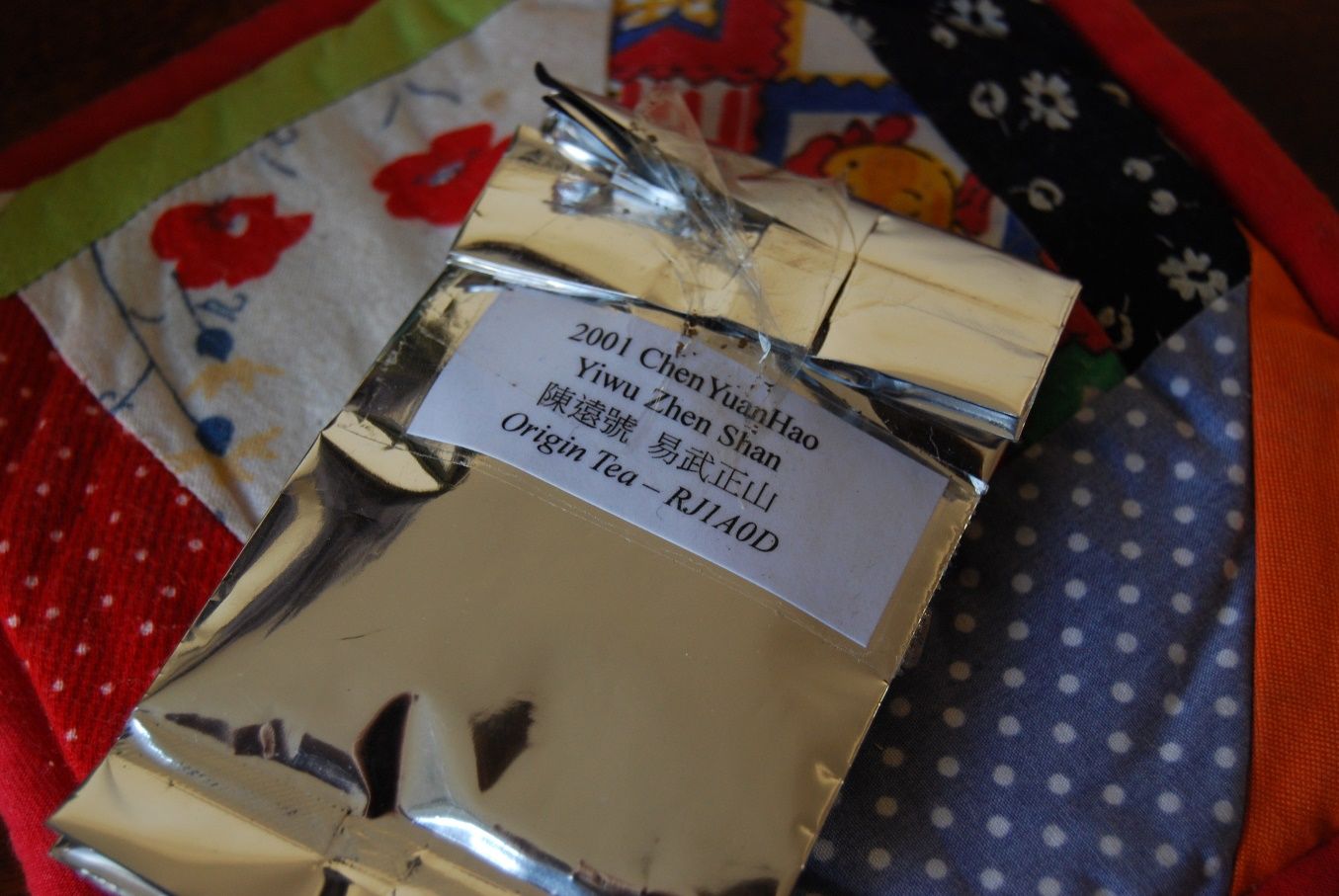
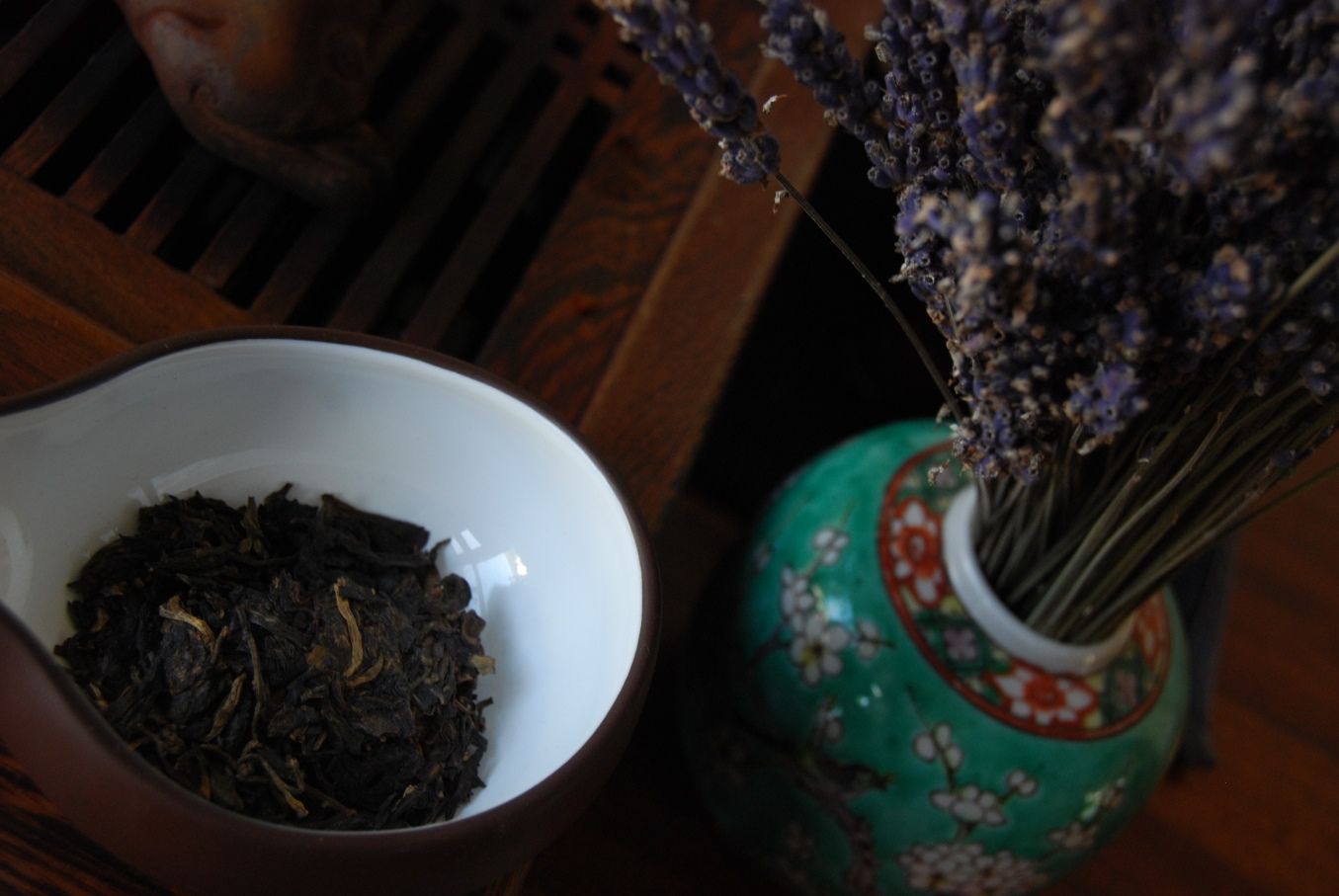
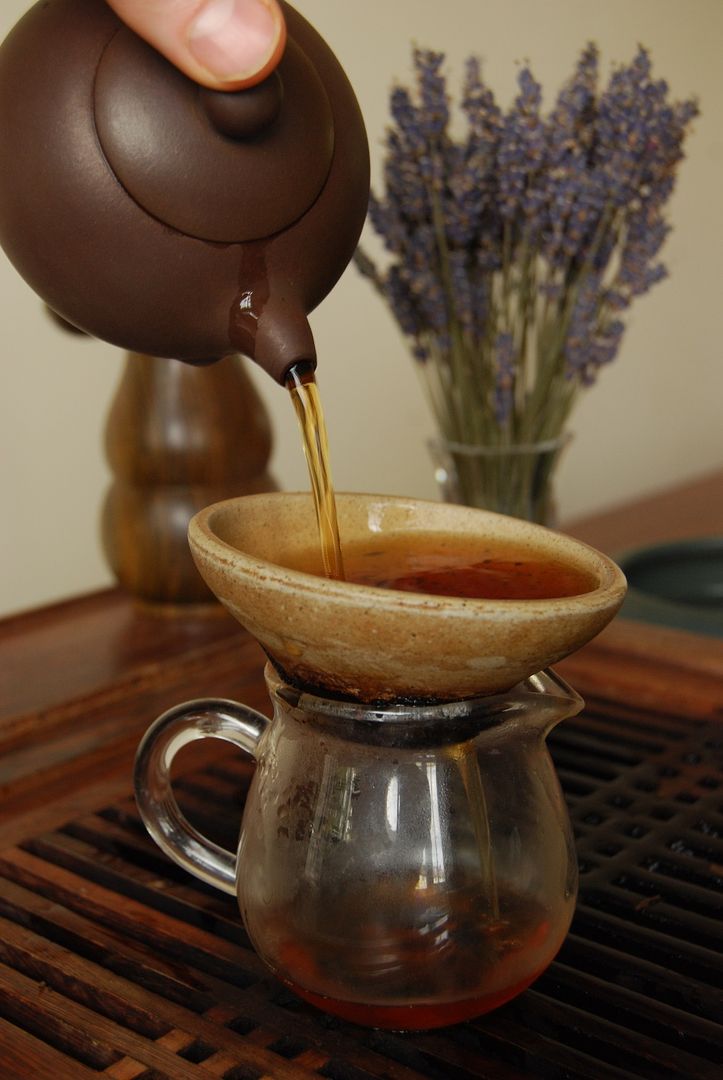
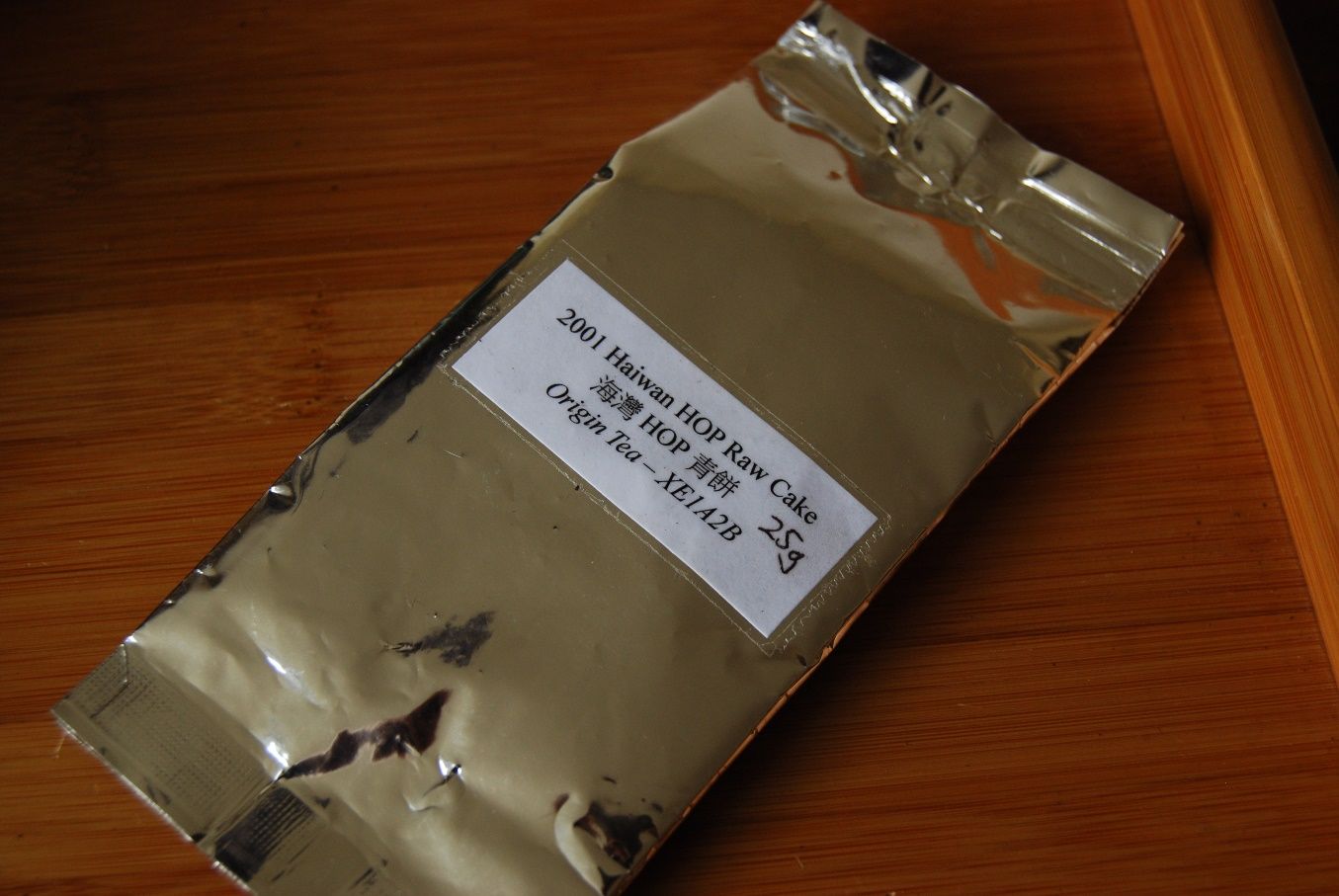

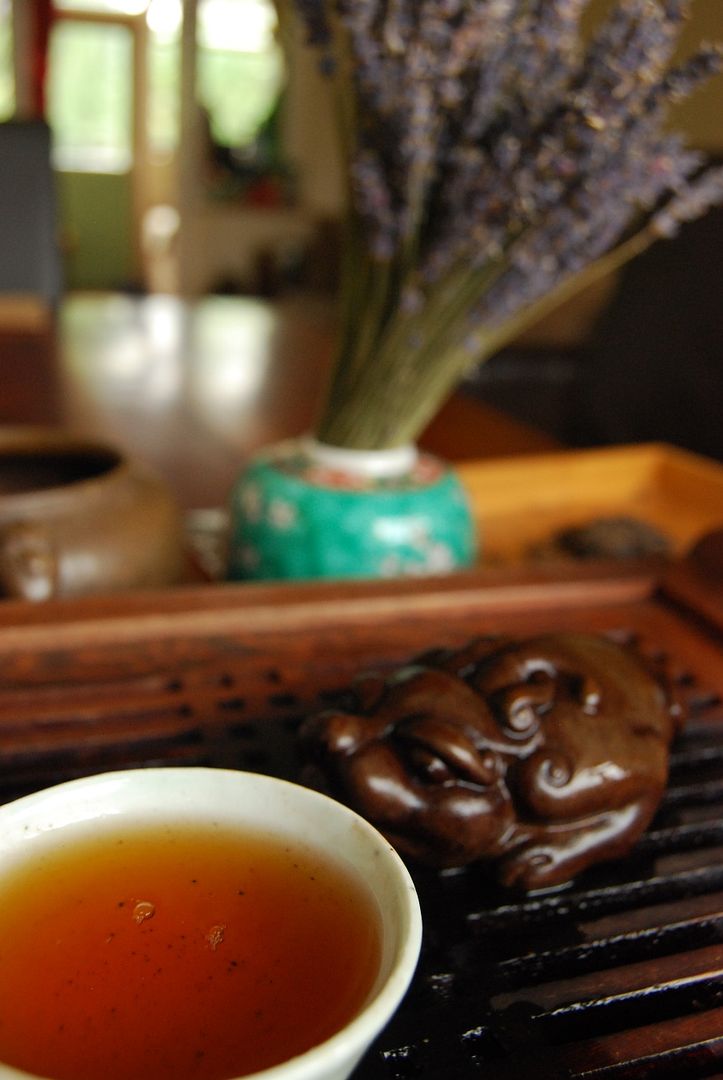
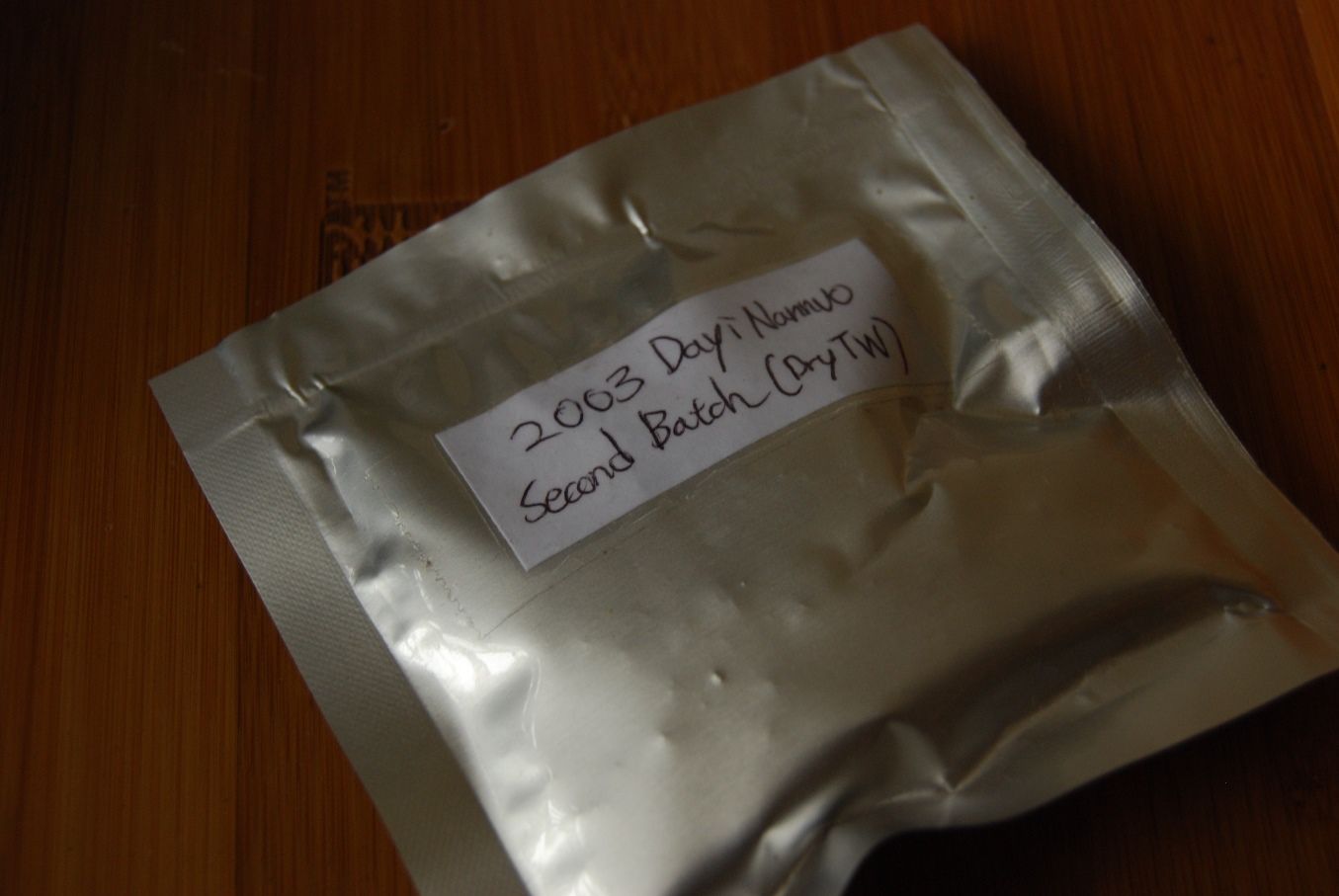
5 comments:
Dear Hobbes,
I was led to believe by your numerous amorous declarations over the years that you espouse stronger feelings for the Dayi than just a luke warm like. I can only imagine your 7542's hanging their heads low saying "I thought he loved us..." Don't go Willoughby on them.
H
Hongyin is red,
Lanyin is blue,
Dayi, even though you prostitute yourself with unrealistic prices
I cannot help but love you.
Dear Hobbes,
At least you bet on the right horse being a Dayi man. Think of all those left holding the bag with other big factory rubbish. There was a time when a Lao Tong Zhi and a Dayi were only a few dollars apart and some XG iron cakes were even more than Dayis.
H
Fun post!
Wonderful article, so fun to hear about other people's views on tea and culture. I have been living with a family of tea farmers in Xishuangbanna Yunnan in Southwestern China, the birthplace of tea. The first tea the world ever had is what we now call Puer tea, raw Puer. After spending much time with this family, I have been able to share this tea with folks. The culture, the love, and the way this tea makes you feel is incomparable and the tea is all from one family, one farm. Definitely just would love to chat about tea sometime if you want to write me. www.MistyPeakTeas.com happy to send out any samples as well. Anyone tried Raw Puer tea? The green kind?
Post a Comment